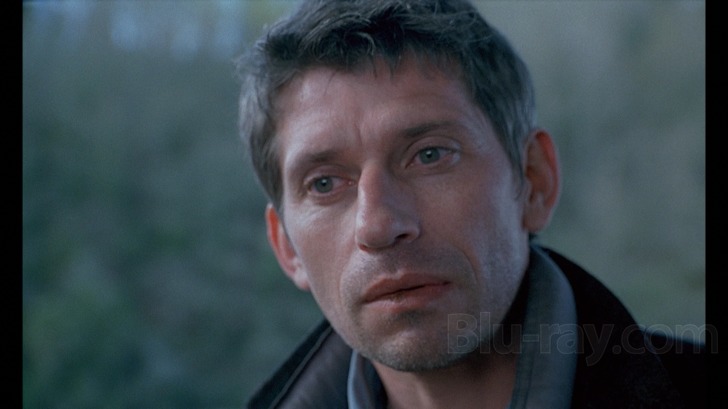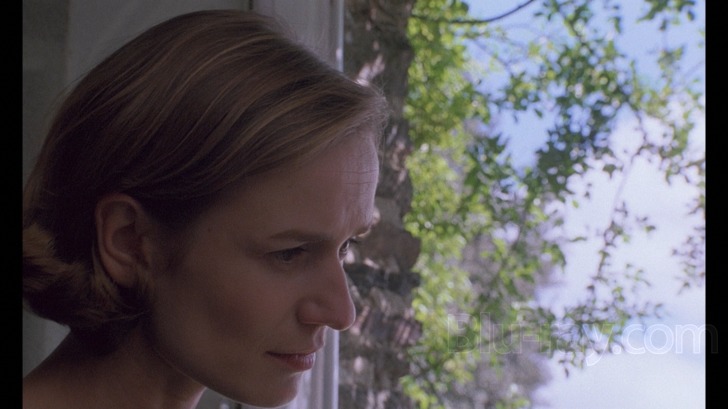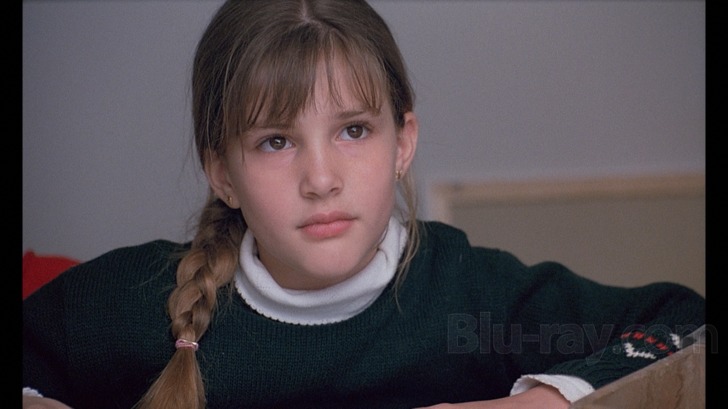The Color of Lies Blu-ray Movie
HomeThe Color of Lies Blu-ray Movie 
Au coeur du mensongeCohen Media Group | 1999 | 113 min | Not rated | May 27, 2014

Movie rating
6.6 | / 10 |
Blu-ray rating
| Users | 0.0 | |
| Reviewer | 3.5 | |
| Overall | 3.5 |
Overview
The Color of Lies (1999)
Frederique Lesage, the new chief of police in a beautiful seaside community in Brittany, soon finds her job more eventful than expected when a ten-year-old girl is found raped and murdered. The last person to see her alive was a cynical and once-famous artist who now gives drawing lessons to earn a living.
Starring: Sandrine Bonnaire, Jacques Gamblin, Valeria Bruni Tedeschi, Bulle OgierDirector: Claude Chabrol
| Foreign | Uncertain |
| Drama | Uncertain |
| Crime | Uncertain |
| Thriller | Uncertain |
Specifications
Video
Video codec: MPEG-4 AVC
Video resolution: 1080p
Aspect ratio: 1.67:1
Original aspect ratio: 1.66:1
Audio
French: LPCM 2.0
Subtitles
English
Discs
50GB Blu-ray Disc
Single disc (1 BD)
Playback
Region A (C untested)
Review
Rating summary
| Movie | 3.5 | |
| Video | 4.0 | |
| Audio | 4.0 | |
| Extras | 2.0 | |
| Overall | 3.5 |
The Color of Lies Blu-ray Movie Review
Death imitates art.
Reviewed by Jeffrey Kauffman May 23, 2014Claude Chabrol is almost unavoidably compared to Alfred Hitchcock, but it’s a perhaps wobbly comparison at best. Case in point: the standard whodunit. Can you name a Hitchcock film that exploits this traditional mystery trope? Hitchcock’s early opus Murder! is probably one of the few films in the iconic director’s career that fits at least relatively snugly into this format, but it’s a film that even many ardent Hitchcock fans probably haven’t seen. Hitchcock’s best known suspense films seem to deliberately shun traditional whodunit devices. Rear Window might be thought of as a “did he really do it”, while even Psycho, a film which apparently “reveals” the murderer during the murder scene ends up playing with that revelation in unexpected ways. In fact, when considering Hitchcock’s post-forties’ oeuvre, arguably his best known films, only The Trouble with Harry really has standard elements of the whodunit, and even there the film really isn’t all that concerned with who might be a potential murderer (in fact playing with the premise that several characters believe they're the murderer). And so putting aside what is probably the most oft-quoted comparison when it comes to Chabrol, The Color of Lies may in fact not have much resemblance to any given Hitchcock outing, but it certainly contains several of Chabrol’s own identifying characteristics, including an occasionally labyrinthine plot as well as a subtle but acerbic sense of humor, one which doesn’t shirk from skewering the morés of the middle class in a small Breton village where a young schoolgirl is found murdered (after having been raped). In what might seem like a passing homage to Hitchcock’s The Wrong Man, the girl’s art tutor is fingered as the likely suspect, though indications are he might—emphasis on might—have nothing to do with the horrible crime. Though “whodunit” is certainly an underlying point of interest in The Color of Lies, the film actually exists more as an almost sociological treatise on the ramifications of suspicion and assumed guilt in an isolated, almost hermetically sealed, village environment.

Of course even Chabrol himself isn’t really all that interested in the “who” of the “whodunit”, and instead is more focused on exposing the kind of ragged underbelly of a seemingly picturesque coastal town in Brittany. It’s the collateral damage from the crime, rather than the crime itself, that Chabrol utilizes to create most of The Color of Lies’ dramatic impetus, to the point that when the killer is revealed, it’s almost a “meh” moment, neither adding to nor detracting from what has provided the story its momentum—the slow but steady dissolution of order and something approaching normalcy in the life of a local painting instructor, a man who was evidently the last individual to see the little girl alive.
René Sterne (Jacques Gamblin) is that tutor, a once promising artist who has seen his career take a rather precipitous downturn, something his pretty wife Vivianne (Sandrine Bonnaire) attributes to a rocky economy. But even Vivianne seems to have nostalgic memories of some of René’s past painting triumphs in a landscape format that he wants to eschew in favor of portraits. In fact, he had been painting the portrait of the little girl, a waif named Eloise, before she left his studio and was later found violated and strangled.
Meanwhile, Vivianne seems to be increasingly enamored of a new village celebrity, an author and television personality named Desmot (Antoine de Caunes). Do these two have a history? They seem awfully familiar even during their first scene within the film, but Chabrol is typically discrete about this. Vivianne seems to be one of the few people offering unbridled support for her husband (even if she senses that René thinks she might actually suspect him), but soon Chabrol and his frequent collaborator co-scenarist Odile Barski indulge in their favorite pastime of clarifying the absolute absence of any regimented moral order with many of the characters. Vivianne, for all her positive attributes, has her own peccadilloes to deal with.
While the interpersonal drama between René, Viviane and Desmot plays out, a chain smoking police chief named Frédérique Lesage (Valeria Bruni Tedeschi) is investigating the death of Eloïse, and René is certain she has her sights set on him. Lesage is yet another one of Chabrol's unusual detectives. She speaks in a whisper thin voice, never really seems to have much of a handle on what's going on, but perseveres and proves she has at least a little mettle. But her investigations raise a hornet's nest of suspicion surrounding René. His students are canceling left and right, and aside from Viviane, René only finds support from his friend Régis Marchal (Pierre Martot), a shady character who is involved in various illegal activities that end up interwoven with the death of another character.
As with many other Chabrol pieces, the mystery (actually, mysteries, as evidenced by that aforementioned second death) is never as important as the changes the characters go through. René’s psychological unraveling is the central dramatic focus of the film, one that's certainly spurred on by the deaths in the film, but which also obviously is a (to quote a phrase much in the news these days) pre-existing condition. The contrast between René’s depressive, dour perspective and Viviane’s almost impossibly optimistic point of view is the main dialectic driving the film, as evidenced by the film's very closing lines voiced by the two main characters. Chabrol overtly contrasts nihilism with spiritual renaissance, but fades out without depicting an ultimate victor.
The Color of Lies Blu-ray Movie, Video Quality 

The Color of Lies is presented on Blu-ray courtesy of Cohen Film Collection with an AVC encoded 1080p transfer in 1.67:1. This is a major upgrade from the old, shoddy looking DVD, with much better saturated and more accurate looking color, stronger contrast and overall much greater clarity. Blues are especially vivid throughout the film. A natural grain field extends throughout the presentation. There are what appear to be some minor but noticeable signs of sharpening which give a somewhat processed look at times, but the film's nice Breton ambience pops quite well on this Blu-ray. A hefty bitrate and roomy BD-50 allow even the fog drenched night scene that occurs late in the film to resolve with no issues whatsoever.
The Color of Lies Blu-ray Movie, Audio Quality 

The limited sound design of The Color of Lies is presented quite well on the LPCM 2.0 track on this Blu-ray (in the original French language, with optional English subtitles). The nice sounds of a windswept coast or even various noises in the village are all presented cleanly and clearly, as is dialogue. The rather anachronistic (and dare I say not especially evocative) music of Matthieu Chabrol (Chabrol's son) also comes through loud and clear, which may or may not be a good thing depending on your point of view.
The Color of Lies Blu-ray Movie, Special Features and Extras 

- Audio Commentary by Film Critics Wade Major and Andy Klein. This is another nice commentary by the same pair who provided similar duty on Cohen's recent release of Chabrol's The Inspector Lavardin Collection. They get into Chabrol's history, especially this particular era of his work, while also discussing some of his themes and the careers of the actors in the film.
- 2014 Re-Release Trailer (1080p; 1:36)
The Color of Lies Blu-ray Movie, Overall Score and Recommendation 

If you're new to Chabrol and come to his films based on the (too) often quoted comparison to Hitchcock, chances are you'll be disappointed with The Color of Lies, or indeed many other films by Chabrol. The mystery here is actually less important than what happens because of the mystery. The turgid private lives of villagers (albeit most middle class) fascinates Chabrol, and he loves to poke and prod underneath apparently "normal" people who often end up having rather dark elements in their psyches and (as is the case in this film) their behaviors. Approaching The Color of Lies as a piquant character study that just happens to have a couple of mysteries lurking in the background might better ensure a satisfying experience. This Blu-ray has generally excellent video and audio, and comes with a good commentary. Recommended.
Other editions
The Color of Lies: Other Editions
Similar titles
Similar titles you might also like
(Still not reliable for this title)

Nightcap
Merci pour le Chocolat
2000

The Flower of Evil
La fleur du mal | 4K Restoration
2003

The Swindle
Rien Ne Va Plus | 4K Restoration
1997

Torment
L'enfer
1994

Mother
마더 / Madeo
2009

Betty
1992

Pioneer
Pionér
2013

The Housemaid
하녀 / Hanyo
1960

The Third Murder
三度目の殺人
2017

Graduation
Bacalaureat
2016

The Possessed
La donna del lago
1965

A Black Veil for Lisa
La morte non ha sesso
1968

Once Upon a Time in Anatolia
Bir Zamanlar Anadolu'da
2011

Elle
2016

M
M - Eine Stadt sucht einen Mörder / German and English Versions
1931

High and Low 4K
天国と地獄 / Tengoku to jigoku
1963

The Salesman
Forushande
2016

Stranger by the Lake
L'inconnu du lac
2013

Everybody Knows
Todos lo saben
2018

Tell No One
Ne le dis à personne
2006

